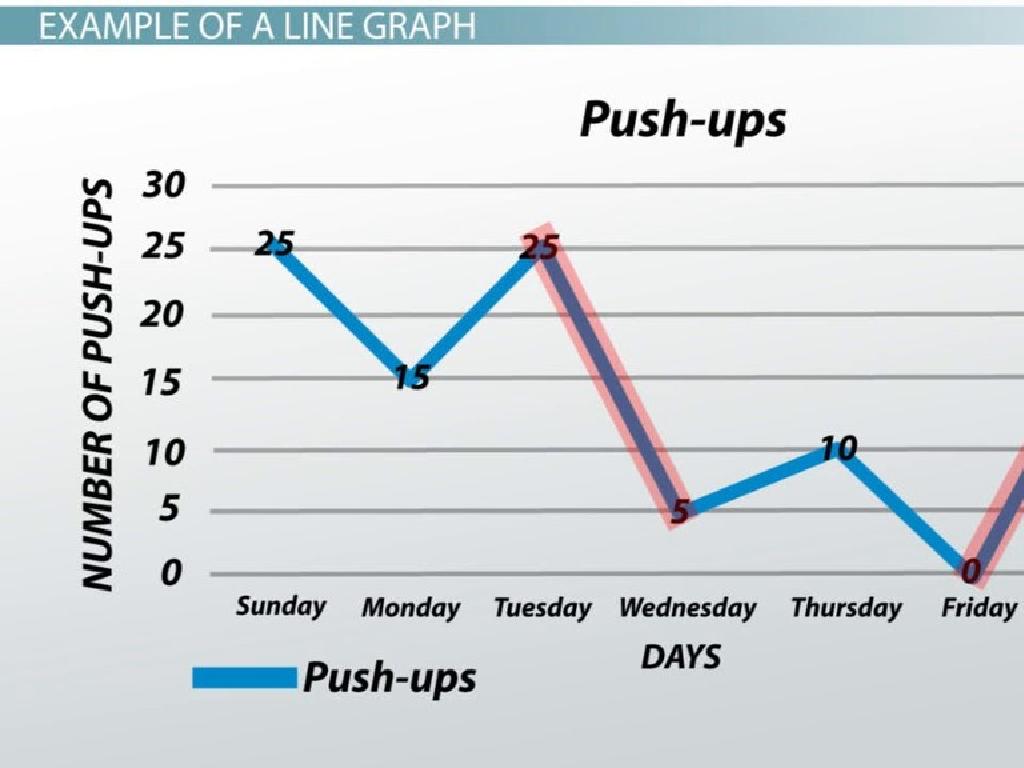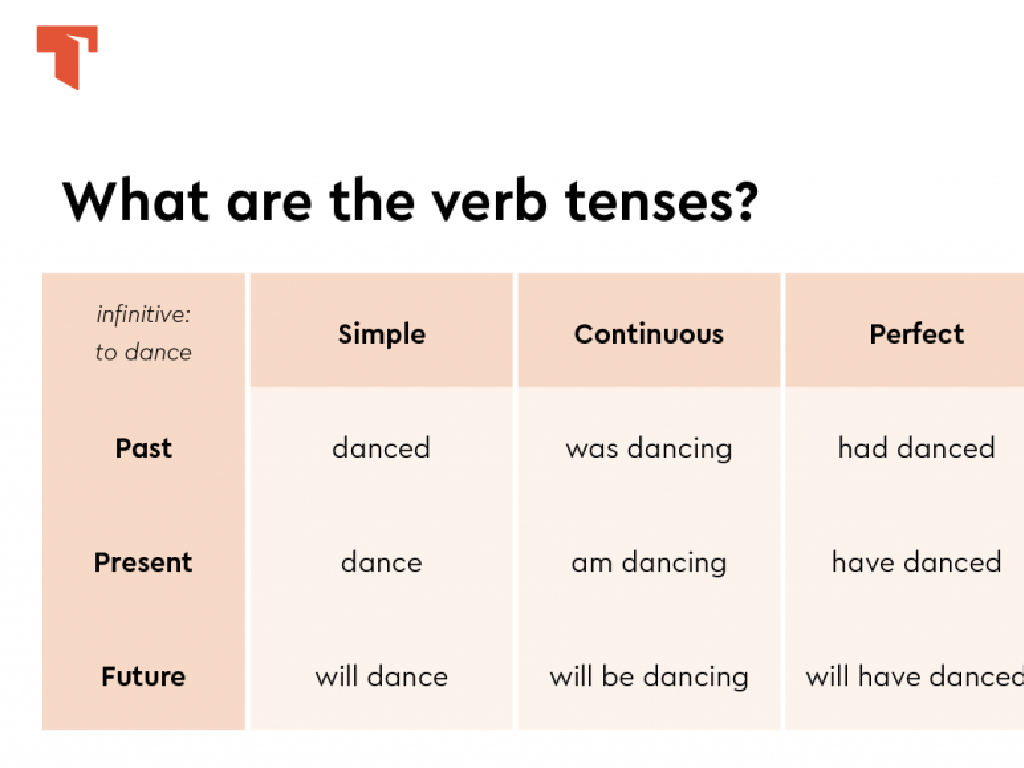Find The Constant Of Proportionality From A Graph
Subject: Math
Grade: Eighth grade
Topic: Proportional Relationships
Please LOG IN to download the presentation. Access is available to registered users only.
View More Content
Finding the Constant of Proportionality
– Understanding proportional relationships
– A proportional relationship has a constant ratio between two quantities.
– Real-life proportionality examples
– Examples: speed (miles/hour), recipe ingredients.
– Identifying the constant on a graph
– The constant is the ratio y/x at any point on the line (not the origin).
– Applying the constant in problems
– Use this constant to solve various real-world problems.
|
This slide introduces the concept of proportional relationships and how to find the constant of proportionality from a graph. Begin by explaining that in a proportional relationship, two quantities increase or decrease at the same rate. Show real-life examples like speed, where distance and time are in proportion, or recipes, where the ratio of ingredients is constant. Demonstrate how to find the constant of proportionality on a graph by taking any point (except the origin) and dividing the y-coordinate by the x-coordinate. Emphasize that this constant is the same for any point on the line. Conclude by discussing how this constant can be applied to solve problems, such as predicting future events or understanding relationships in science and economics.
Understanding Proportionality
– Define proportionality
Proportionality occurs when two quantities maintain a constant ratio.
– Constant of proportionality (k)
Also known as the unit rate, ‘k’ is the constant value that relates two proportional quantities.
– Proportionality in daily life
Examples include speed (miles per hour) or density (mass per volume).
– Graphing proportional relationships
|
This slide introduces the concept of proportionality, a foundational idea in understanding relationships between quantities. Proportionality means that as one quantity increases, the other quantity increases at a consistent rate, which is the constant of proportionality, or ‘k’. This constant can be found on a graph as the ratio of y over x (y/x) for any point on the line. In everyday life, proportionality is seen in situations like calculating speed or density. When graphing proportional relationships, the line will always pass through the origin (0,0) and have a slope of ‘k’. Encourage students to think of other examples where they encounter proportionality in their daily lives and to visualize how these relationships would look on a graph.
Graphs and Proportionality
– Representing relationships graphically
– Use a graph to show how two quantities are related
– Identifying proportional graphs
– Proportional graphs are straight lines through the origin
– Characteristics of proportional graphs
– They have a constant ratio and a constant slope
– Finding the constant of proportionality
– The slope of the line equals the constant of proportionality
|
This slide introduces students to the concept of representing proportional relationships using graphs. Emphasize that a graph of a proportional relationship will always be a straight line that passes through the origin (0,0). Discuss the characteristics of proportional graphs, such as having a constant ratio (the constant of proportionality) and a constant slope. Demonstrate how to find the constant of proportionality by taking any two points on the line and dividing the y-coordinate by the x-coordinate, which should yield the same value for any points on the line. Provide examples and possibly a class activity where students can practice plotting points and identifying the constant of proportionality from various graphs.
Finding the Constant of Proportionality from Graphs
– Define constant of proportionality (k)
– ‘k’ is the ratio y/x for every point (x, y) on the line
– Steps to find ‘k’ in graphs
– Plot points, draw the line, calculate the ratio y/x for any point
– Graphical example to determine ‘k’
– Given graph with points, calculate ‘k’ as y/x (e.g., if y=4 when x=2, k=2)
– Practice finding ‘k’ with various graphs
|
The constant of proportionality, represented as ‘k’, is a crucial concept in understanding proportional relationships in graphs. It is the consistent ratio between two quantities, y and x. To find ‘k’ from a graph, students should first plot the points, draw the line of the graph, and then pick any point to calculate the ratio of y to x. This ratio should remain constant for all points on the line. Provide an example graph and walk through the process of finding ‘k’. Then, allow students to practice with different graphs to solidify their understanding. Ensure they check the ratio with multiple points to confirm the constancy of ‘k’.
Finding the Constant of Proportionality
– Walk through a practice graph
– Examine a graph where y is proportional to x
– Find the constant ‘k’ together
– ‘k’ is the ratio y/x for any point on the line
– Discuss the steps involved
– Identify points, divide y by x, and find ‘k’
– Review the solution and process
– Ensure understanding of ‘k’ and its significance
|
This slide is aimed at practicing how to find the constant of proportionality, ‘k’, from a graph. Start by presenting a graph where the y-axis represents the output and the x-axis represents the input of a proportional relationship. Walk the students through the process of selecting a point on the graph (other than the origin), and then divide the y-coordinate by the x-coordinate to find ‘k’. Discuss why this value remains constant for any point on the line. After finding ‘k’, go over the solution with the class to ensure they understand the process and can apply it to different graphs. Encourage students to ask questions and provide additional examples if needed to solidify their understanding.
Group Activity: Graph Analysis
– Break into small groups
– Each group gets a unique graph
– Determine the constant of proportionality
– The constant is the ratio y/x for any point (x, y) on the graph
– Discuss findings within the group
– Share how you found the constant and its significance
|
This group activity is designed to foster collaborative learning as students work together to understand the concept of the constant of proportionality from graphical representations. Each group will receive a different graph depicting a proportional relationship between two variables. Students must analyze the graph to find the constant of proportionality, which is the consistent ratio between the y and x values for all points on the graph. After finding the constant, students should discuss how they arrived at their answer and the importance of this constant in understanding the relationship between the variables. As a teacher, circulate among the groups to provide guidance and ensure that each group is on the right track. Possible variations of graphs include different scales, units, and contexts to challenge students’ understanding.
Share and Reflect: Proportionality in Graphs
– Groups present their findings
– Discuss challenges encountered
– Were there any confusing points?
– Reflect on ‘k’ in graphs
– ‘k’ represents the constant rate of change
– Understand ‘k’s role in real-world
– ‘k’ helps predict outcomes and model situations
|
This slide aims to facilitate a collaborative classroom environment where students share their experiences and insights from the activity of finding the constant of proportionality, ‘k’, from graphs. Encourage each group to discuss their approach and any difficulties they faced, fostering a problem-solving mindset. Emphasize the significance of ‘k’ as it reflects the consistent relationship between variables in proportional relationships. Highlight how understanding ‘k’ is crucial in interpreting graphs and applying this knowledge to real-life scenarios, such as calculating speed or cost. Provide examples like speed = distance/time to illustrate ‘k’ as the rate of change. Prepare to guide a discussion on how ‘k’ can be used to make predictions and the importance of recognizing proportional relationships in various contexts.
Class Activity: Find ‘k’ Scavenger Hunt
– Engage in a classroom scavenger hunt
– Solve clues to uncover hidden graphs
– Each hidden graph reveals a unique ‘k’
– Determine ‘k’ for each graph found
– Use the formula k = y/x to calculate the constant of proportionality
|
This interactive class activity is designed to help students apply their knowledge of finding the constant of proportionality from graphs in a fun and engaging way. Set up the classroom with various graphs placed strategically around the room. Each graph should be associated with a clue that leads to its location. Once a student finds a graph, they should use the formula k = y/x, where ‘y’ is the dependent variable and ‘x’ is the independent variable, to calculate the constant of proportionality, ‘k’. Teachers should prepare different levels of clues and graphs to cater to varying student abilities, ensuring that each student is challenged appropriately. After the activity, facilitate a discussion where students can share their findings and methods used to determine ‘k’. This will reinforce their understanding and allow for collaborative learning.
Conclusion: Constant of Proportionality
– Recap of proportionality
– Significance of constant ‘k’
– ‘k’ shows the rate of change between variables
– Homework: Graph practice
– Solve problems to find ‘k’ from various graphs
– Prepare for next lesson
|
As we conclude today’s lesson, remind students of the key points discussed about proportional relationships and the constant of proportionality. Emphasize the importance of ‘k’ as it represents the consistent rate at which two variables change in relation to each other. For homework, assign a set of problems that require students to analyze different graphs and determine the constant of proportionality from them. This will reinforce their understanding and prepare them for more complex problems. In the next class, we will review the homework and address any difficulties encountered. Encourage students to approach the homework with the understanding that practice is essential in mastering the concept of finding ‘k’ from graphs.





